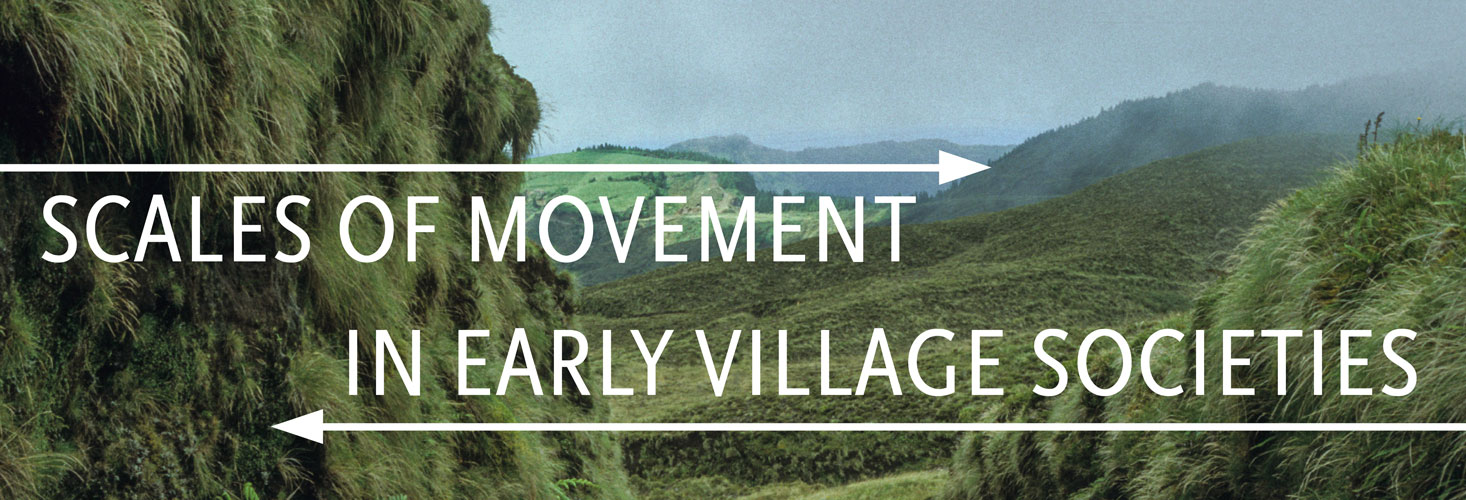 In the traditional archaeological characterization of early food-producing communities, research focused primarily on sedentariness, whereas questions about mobility and movement through space were often relegated to discussions of hunter-gatherer groups and nomadic pastoralists. The neglect of mobility in studies of “early village societies” – roughly speaking the Neolithic and Chalcolithic periods – was based partly on dichotomized views of sedentary and mobile ways of life as irreconcilable and partly on a scarcity of distinct archaeological evidence of spatial movement.
In the traditional archaeological characterization of early food-producing communities, research focused primarily on sedentariness, whereas questions about mobility and movement through space were often relegated to discussions of hunter-gatherer groups and nomadic pastoralists. The neglect of mobility in studies of “early village societies” – roughly speaking the Neolithic and Chalcolithic periods – was based partly on dichotomized views of sedentary and mobile ways of life as irreconcilable and partly on a scarcity of distinct archaeological evidence of spatial movement.
Nowadays, the degrees and diverse forms of mobility practiced in prehistoric societies have become an integral part of archaeological research. Archaeometric methods have been developed, such as isotope and DNA analyses on human and animal bones, that can help to trace spatial movements of past individuals and communities. The traces of such movements are being increasingly recognized in the archaeological record as well as included in debates on raw material procurement, trade networks and subsistence strategies.
Moving from a large-scale to a more microscale perspective, looking at the concept of movement as a basic and ubiquitous human action can provide essential knowledge about the agency and experiences of people, their everyday activities and interrelations. The archaeology of movement can shed light on perceptions and uses of landscapes that are crossed and shaped by trails, routes and paths of groups and individuals in the past. Beside environmental entanglements, human-animal relations play a crucial role in the political ecology of past societies and can play a part in the constitution of their life rhythms. Exploring the mobility of herds has therefore not only the potential to contribute to socioeconomic questions, but also to yield insights into people’s movements on various temporal and spatial scales.
The aim of the workshop is to place early village communities, regardless of geographical location, more firmly into the discourse on spatial movement. Drawing from multidisciplinary approaches, the program will encompass contributions presenting specific archaeological cases as well as broader theoretical issues on prehistoric mobility.
24.11.2016 | |
10:00 - 10:15 | Welcome and opening speech Wolfram Schier |
10:15 - 10:45 | Oscar Aldred |
10:45 - 11:15 | Jim Leary |
11:15 - 11:45 | Coffee and tea |
11:45 - 12:15 | James Snead |
12:15 - 13:30 | Lunch break |
13:30 - 14:00 | Andrea Ricci |
14:00 - 14:30 | Agathe Reingruber |
14:30 - 15:00 | Coffee and tea |
15:00 - 15:30 | Reinhard Bernbeck |
15:30 - 16:00 | Jana Eger |
16:00 - 16:30 | Julie Daujat Marjan Mashkour |
16:30 - 18:00 | Discussion |
25.11.2016 | |
09:30 - 10:00 | Corina Knipper Johannes Krause Ken Massy Stephanie Metz Alissa Mittnik Philipp Stockhammer Fabian Wittenborn |
10:00 - 10:30 | Julia Giblin |
10:30 - 11:00 | Coffee and tea |
11:00 - 11:30 | Elke Kaiser Martin Riesenberg |
11:30 - 12:30 | Final discussion |
